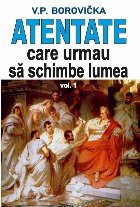
Disponibilitate: nedisponibila
Preț: nedisponibil LEI
Autor(i): ed.: Zsuzsanna Kopeczny , Zsuzsanna Kopeczny
Editura: Mega
Anul apariției: 2021
Nr. pagini: 190 pagini
Limba: engleza
ISBN: 9786060203599
Categorii: Carte nefolosită, Istorie, Istorie universala
The region described in the title – historically known as Banat (Hung. Temesköz or Bánság) – was in almost permanent change after the Mongol Invasion of 1241–1242. The area is characterised ith a special landscape including extended wetlands, meandering water courses and the sands of Alibunar on the one hand, and with important economic resources, such as the mines around Resica/Reşiţa and the fords of Haram/Banatska Palanka and Keve/Kovin, on the other. To these factors we can add the frontier zone between Latin and Orthodox Christianity and – from the late 14th century – the conflict zone between the Hungarian Kingdom and the expanding Ottoman Empire. All these factors had their impact on the region’s society. The main trends of ethnic and religious transformations can be traced partly through written evidence directly related to migration, partly through indicators referring to the above phenomena indirectly.
(Abstract from „POPULATIONS AND RELIGIONS: THE TRANSFORMATION OF THE DANUBE-TISZAMUREȘ/ MAROS INTERFLUVE BETWEEN THE MIDTHIRTEENTH AND THE LATE SIXTEENTH CENTURY”, Beatrix F. Romhányi)
We are able to present a series of points of view after running through documentary data we have at our disposal and analyzing them, as those data reflect the way the elites in the Banat consolidated their social and juridical statute during the reign of the king-emperor, due to their military merits. First of all we have to wonder if the new legislative direction the Angevins introduced and Sigismund of Luxemburg kept on determined only social and confessional coercions or came with a series of opportunities for the social elites in the medieval Banat preserve their privileged statute. When obliged to integrate into norms of an Occidental provenience, with the written acts to prove their quality of lands owners, the nobles there would have availed themselves of representing an important force during the long-lasting conflicts on the Danube line and that should have been used in defending the kingdom. The fact that their loyal military services were frequently followed by new acts of donation to acknowledge their hereditary possessions shows the central power’s concern on preserving the defensive capacity of that area and lso a powerful social medial range to be counterpoised to the barons’ leagues which had created so any problems in Sigismund’s first part of ruling.
Comandă online Politics and society in Central and South-East Europe : life under the shadow of the Ottoman Empire's expansion (15-16th centuries),3-5th October 2019, Timişoara scrisă de ed.: Zsuzsanna Kopeczny , Zsuzsanna Kopeczny, tiparită la editura Mega în anul 2021. cu plata ramburs sau online cu cardul. Momentan titlul Politics and society in Central and South-East Europe : life under the shadow of the Ottoman Empire's expansion (15-16th centuries),3-5th October 2019, Timişoara nu este disponibil însa vă puteți înscrie pentru a fi notificat în momenul reaprovizionarii.

Marea strategie a Imperiului Roman din secolul I e.n. până în secolul III e.n.
Universităţii de Vest
Edward N. Luttwak
9786303270357
356 pagini
An: 2023

Mintea sovietică : cultura rusă sub comunism
Humanitas
Isaiah Berlin
9789735081645
352 pagini
An: 2023

Curiozităţi ale istoriei
Meteor Press
MIHAI MANEA
9789737288820
256 pagini
An: 2023

Atentate care urmau să schimbe lumea - Vol. 1 (Set of:Atentate care urmau să schimbe lumeaVol. 1)
Orizonturi
V. P. Borovicka
9789737365408
256 pagini
An: 2023

O centură, un drum : iniţiativa Chinei pentru dezvoltare şi prosperitate
Ideea Europeana
Cai Fang, trad. din lb. chineză de Laura Călin, Peter Nolan, Wang Linggui
9786065949874
712 pagini
An: 2023

Exil şi rivalităţi : Principele Nicolae
Corint
Diana Mandache
9786060884835
192 pagini
An: 2024

Amintiri din vremuri tulburi : 1988-1992
Evenimentul şi Capital
Tudor Pacuraru
9786306572120
240 pagini
An: 2024

Bombardamentul din 4 aprilie 1944 : cea mai mare tragedie din istoria Bucureştilor în secolul XX
Vremea
Alexandru Arma
9786060812180
236 pagini
An: 2024

Din vremea lui Tudor Vladimirescu
Humanitas
Radu Oltean
9789735083441
160 pagini
An: 2024

Locuri şi oameni din Bucureştii de ieri
Vremea
Dan Rosca
9786060812173
236 pagini
An: 2024

Invatam sa citim. Metode eficiente
Lizuka Educativ
9786306570270
48 pagini
An: 2024

Invatam literele. Exercitii grafice
Lizuka Educativ
9786306570256
48 pagini
An: 2024

Impreuna la gradinita. Povestiri si poezii pentru prescolari zglobii!
Lizuka Educativ
Tatiana Tapalaga
9786306570249
32 pagini
An: 2024

Preadolescentul şi adolescentul cu ADHD : 11-25 de ani,ghid practic pentru părinţi
Lizuka Educativ
Donatella Arcangeli
9786306570232
160 pagini
An: 2024

Opinii sportive
Sport-Turism
Ovidiu Slavu
9786069415078
134 pagini
An: 2024